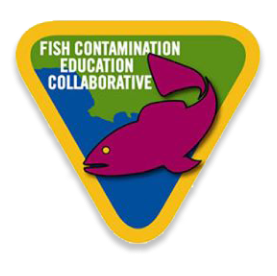Enforcement: An Update On White Croaker Landings by CDFG
When it comes to highlighting efforts that protect both the environment and everyday people alike, there are few programs as impressive as the enforcement efforts carried out by the California Department of Fish and Game (CDFG). FCEC, in collaboration with the CDFG, has noticed a reduction in the landing of white croaker, one of the most affected species from DDT- and PCB-contamination from the Palos Verdes Shelf. Enforcement efforts by CDFG ensure that 10-per-day catch limits and the commercial no-take (catch ban) zone for white croaker near the Palos Verdes shelf are observed during commercial and recreational fishing. The results have been happier markets and healthier oceans.
We caught up with CDFG Lieutenant, Rebecca Hartman, to get a better idea of the scope—and success—of these programs.
1. Can you talk about the process when you inspect a commercial vessel? What are you looking for?
Rebecca Hartman: When wardens inspect a commercial fishing vessel, we try to watch the vessel first and get a feel for what gear they are using, and how many people are working on the boat. Although most people are law-abiding citizens, wardens always have to keep in mind that drugs and other items are sometimes smuggled into the United States by vessel. Every contact with a vessel is appoached with that mindset. When we decide to contact the boat, we usualy pull up next to theirs, get the Captain’s permission to board, and climb over the railings onto the deck to do our inspection. Once we get a feel for everyone on the boat, we ask to see licneses and any fish they have caught.
Wardens look for a few general things when we board a boat at sea. We make sure that the area they are fishing in is open to commercial fishing with the type of gear they are using. In California, we have commercial fisherman that use hookah gear (diving using an air hose that leads to their boat), traps, nets, and fishing lines. We check to make sure the season is open for the type of fish they are taking, and that everyone on board the boat has a commercial fishing license and any permit that might be required for that type of fish or fishing gear. We check to make sure the fish are the right size, and they have only kept the quantity they are allowed to take. If it sounds complicated, it’s because it is! State and Federal Agencies are walking a fine line between allowing people to fish, and protecting the fish populations enough to ensure we have fish for the future. It’s complicated, but it seems to be working.
2. Have you found any white croaker during your inspections (commercial vessels, recreational, markets)? What happens when you find white croaker?
Rebecca Hartman: I have seen them caught by sport fishermen on local piers, but not in the markets or restaurants lately. It appears that the white croaker just aren’t biting in large numbers this year.
When I find white croaker in a market, although it’s been awhile since I have, I ask to inspect the paperwork to determine where the fish were caught. As long as they were not taken in the “red zone,” there’s no problem with eating the white croaker. If they don’t have documentation, I seize the fish until they can provide documentation that it came from a “clean area.” If they can’t provide the documentation, the fish are seized and destroyed.
When I find someone on a pier keeping white croaker inspite of the health warnings, I always point the health advisories out to them and make sure they understand the decision they are making. It is their right to keep and eat white croaker if they choose.
3. What’s the latest news about white croaker landings?
Rebecca Hartman: We looked at landing receipts from 9/1/2010 through 9/1/2011 and found that less than 68 pounds of white croaker caught from the commercial catch ban area were landed. This is a significant decrease from previous years. For instance, in 2009, about 3,300 pounds of white croaker caught from the commercial catch ban area were landed.
So, I think we can say that our outreach has had a huge impact on the market for white croaker, although some could argue it could be other forces as well. Next steps include a warden visiting the businesses that purchased the white croaker to see who is actually consuming it. The warden would also speak to the fishermen landing the white croaker, just to make sure they are aware of the reasons for our concerns, although it is obviously not their target species.


